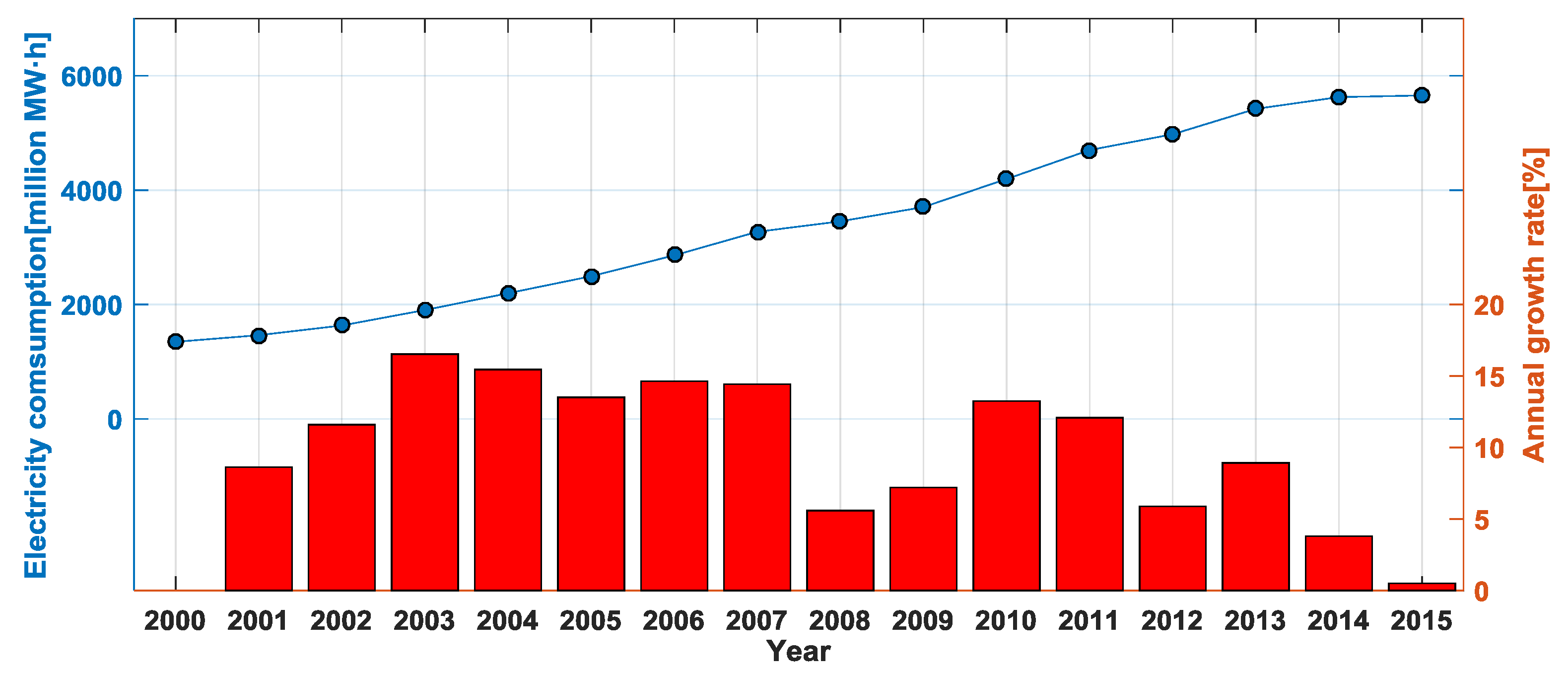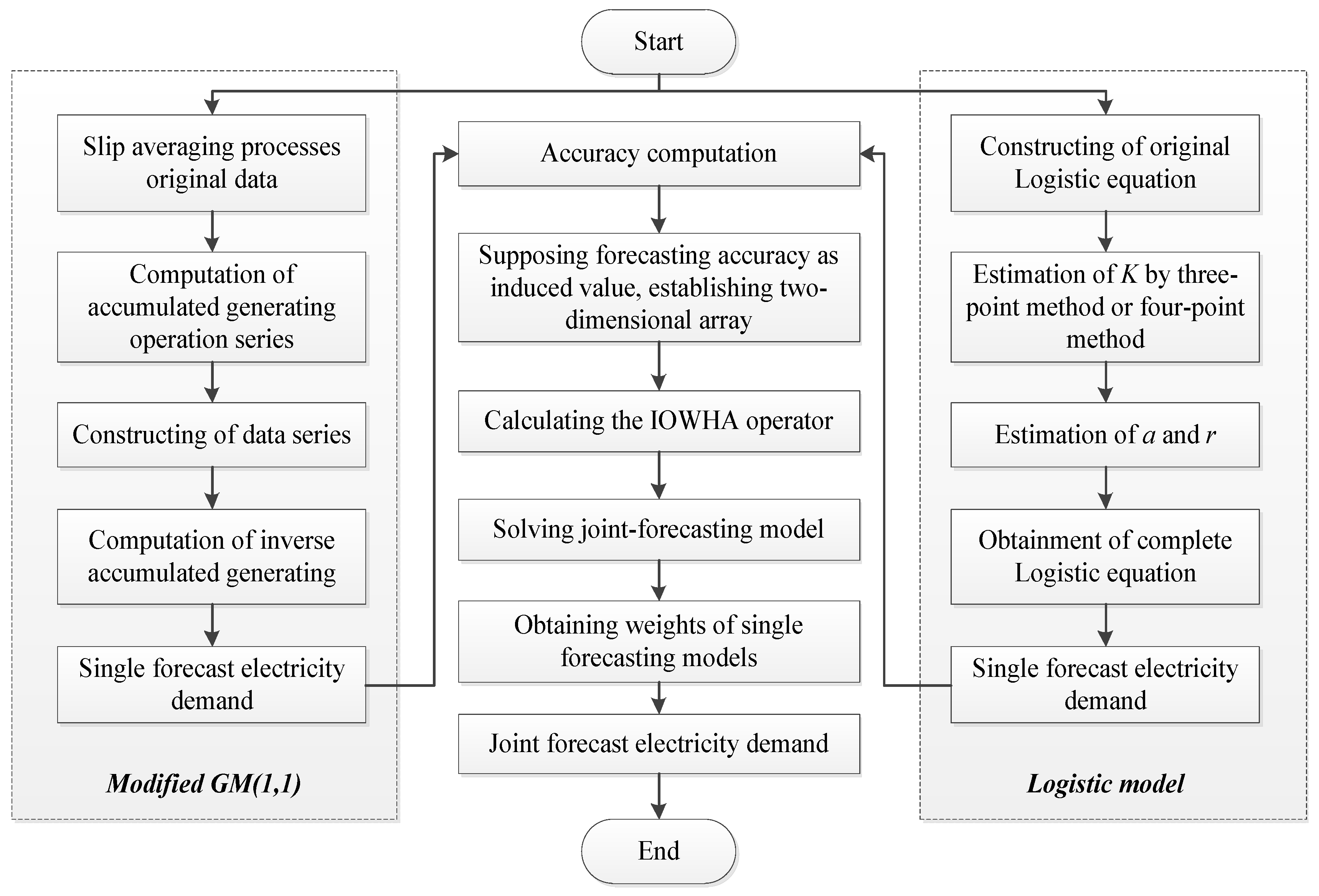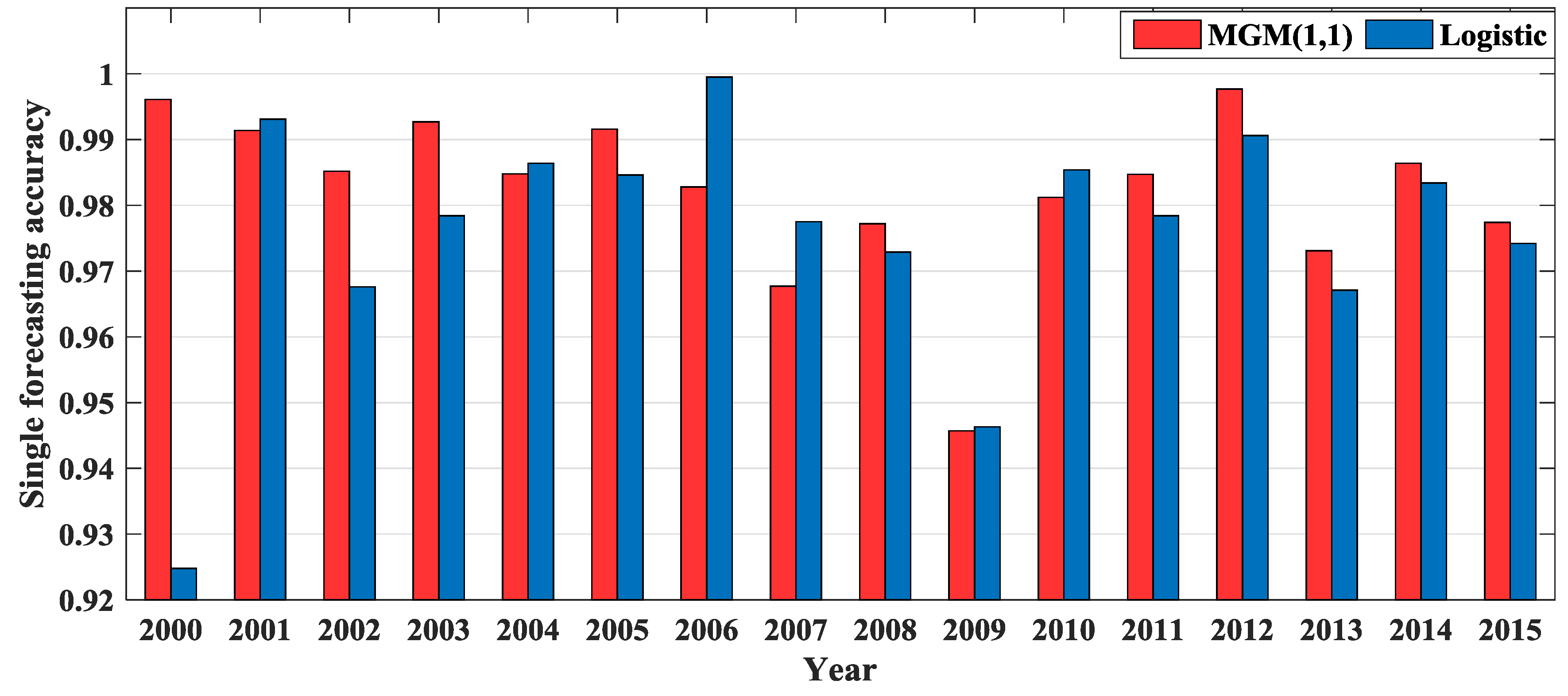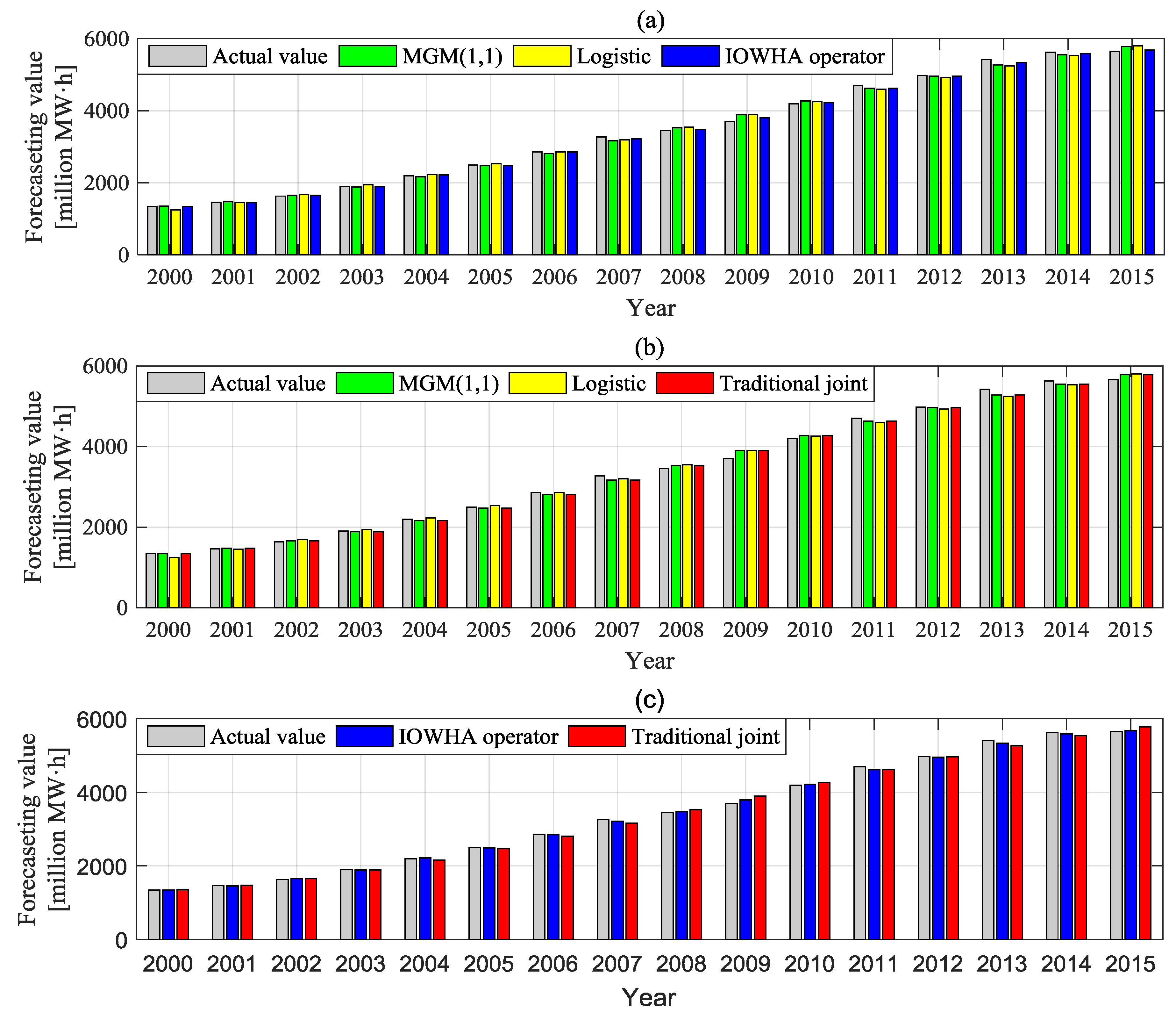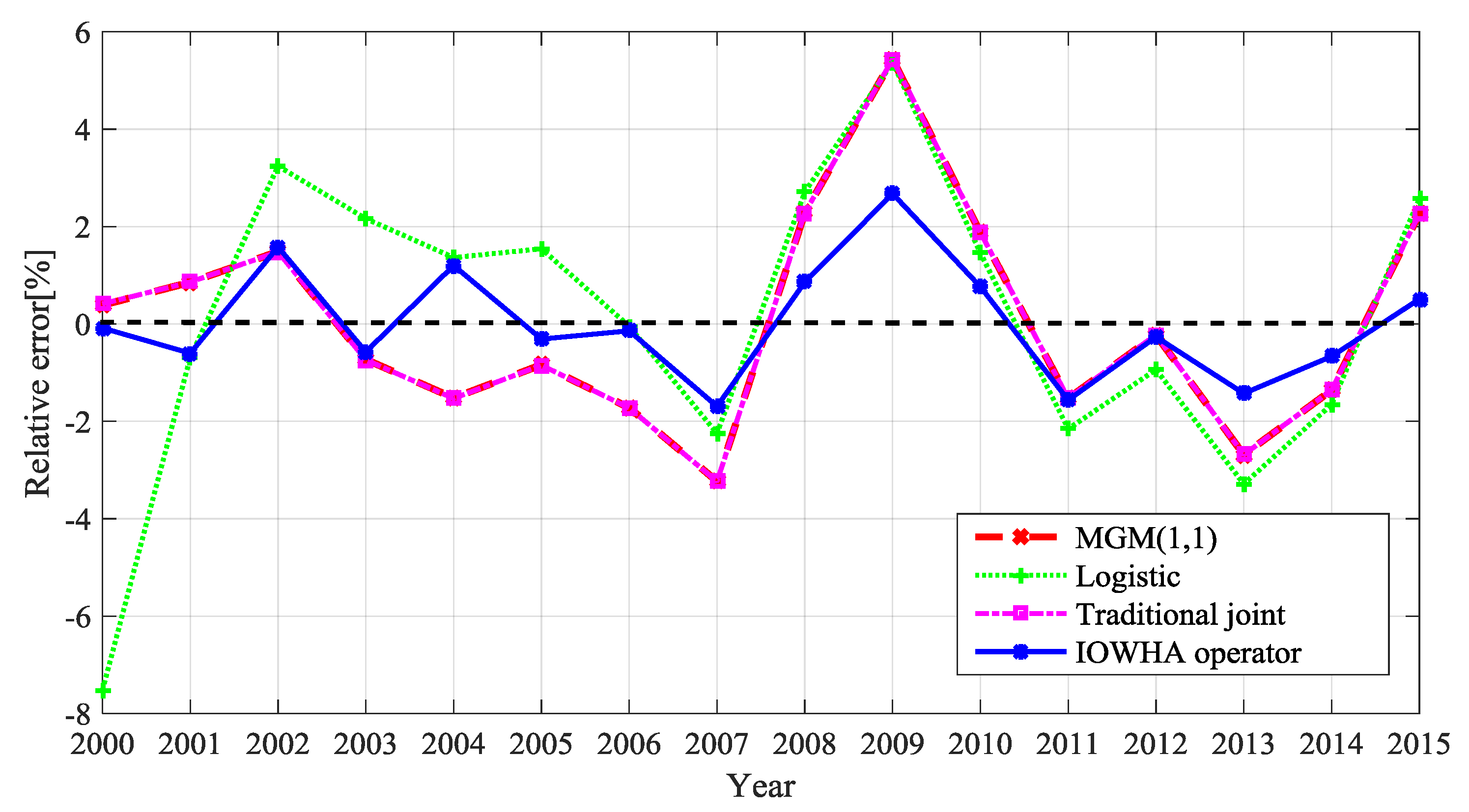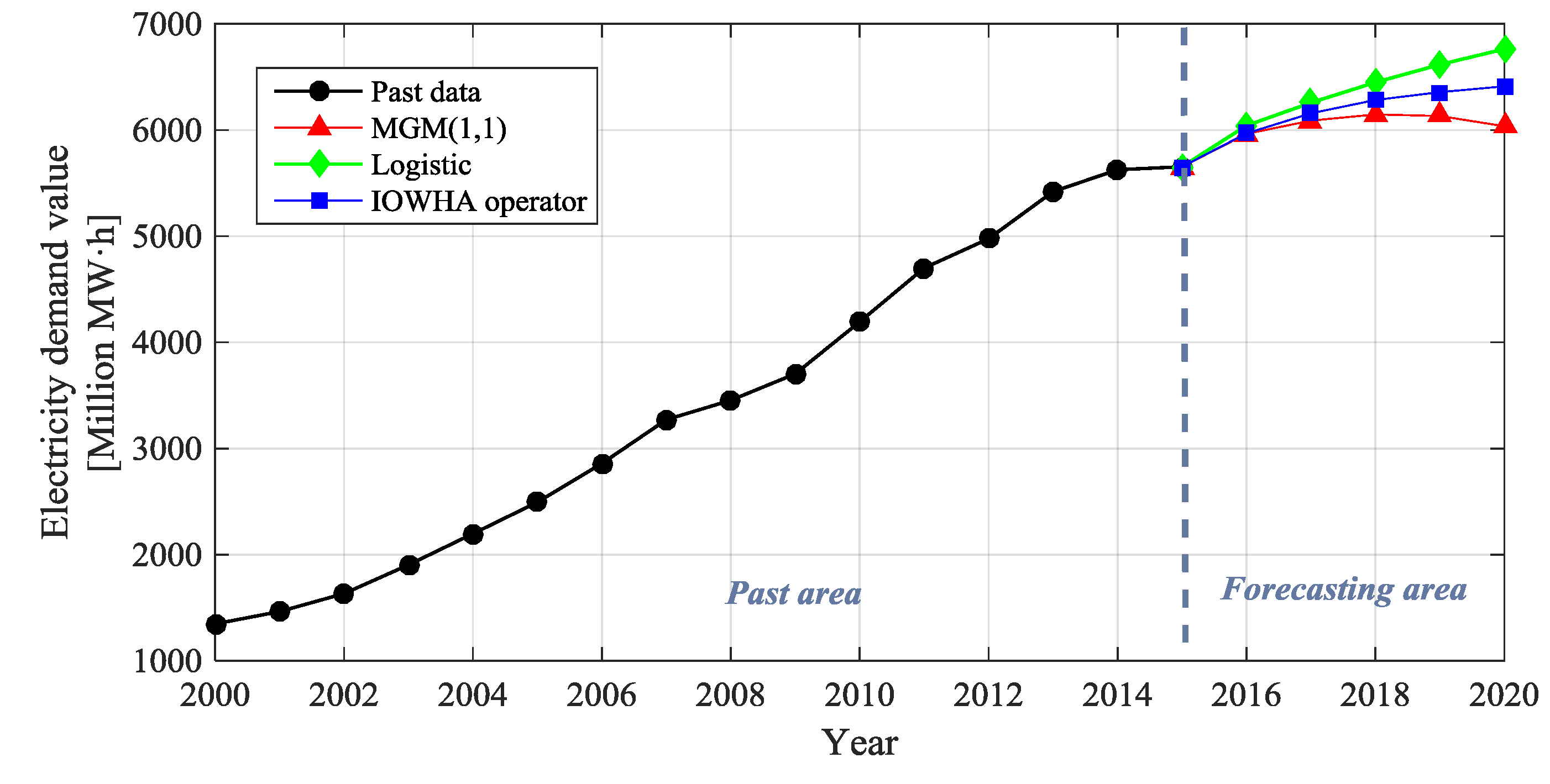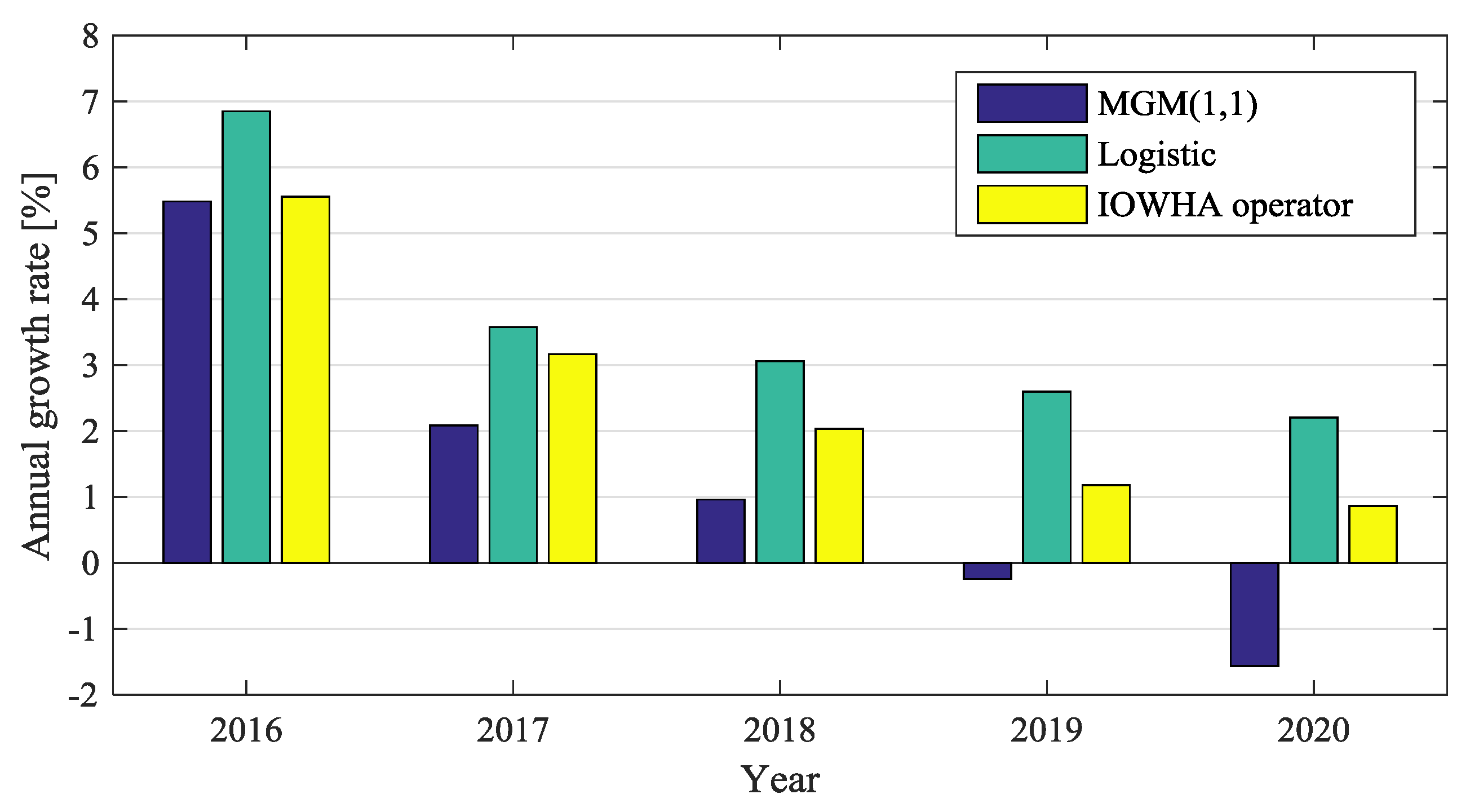1. Introduction
Electric power industry, as the foundation and pillar industry for China’s economic development, affords the guarantee of social power demand and rapid economy expansion [
1]. In addition, electricity is a special commodity that has the characteristics of instantaneous production, transportation and consumption as well as non-storage. Thus, there is important practical significance for forecasting future electricity demand. On the one hand, electricity demand forecasting contributes to reasonable electricity development formulation theoretically. On the other hand, such a sort of prediction can assist in addressing and timely adjusting electricity demand variation condition towards the sustainability [
2].
At present, electricity consumption demand has been at the vanguard of attention by numerous scholars and organizations. Trotter et al. [
3] carried out a long-term and probabilistic electricity demand prediction for Brazil during 2016–2100. Kishita et al. [
4] discussed the electricity consumption of Japan’s telecommunications industry up to 2030. Schweizer et al. [
5] applied a simple analytical approach to US’s long-term electricity demand foresting. In light of the necessity to diminish the high temperatures of Singapore’s buildings, Seung et al. [
6] proposed a power consumption forecasting model in the long term. Likewise, D’Errico [
7] and Kandananond et al. [
8] recommended different forecasting methods to prediction modeling and estimation of the electricity demand respectively in the district of Italy and Thailand. Hernandez et al. [
9] presented a data processing system to demonstrate energy consumption patterns in industrial parks, and the system is validated with real load data from an industrial park in Spain.
Plentiful studies on electricity demand foresting approaches have been adopted in depth. In general, predicted-electricity methods in the demand side have be split into two separate aspects, known as conventional approaches and modern intelligent methods. When it comes to conventional dimension, models like the time series method [
10,
11], index decomposition method [
12], grey prediction [
13], fuzzy prediction method [
14], regression analysis [
15], etc. are extensively utilized. Herewith, Tepedino et al. [
10] presented a time series analysis model and its application to the electricity consumption of public transportation in Sofia (Bulgaria) in 2011, 2012 and 2013. Pappas et al. [
11] proposed an adaptive method based on the multi-model partitioning algorithm including autoregressive integrated moving average (ARIMA) model, for short-term electricity demand forecasting. Perez-Garcia et al. [
12] presented an alternative analysis of electricity demand on the basis of a simple growth rate decomposition scheme that allows the key factors identified under this evolution—while, until 2030, the proposed methodology is illustrated using Spain as a case study to obtain demand projections. Zhao et al. [
13] recommended an improved GM(1,1) model to forecast the electricity consumption of Inner Mongolia, which has enhanced the forecasting performance of annual electricity consumption significantly. Torrini et al. [
14] proposed an extension of fuzzy logic methodology to forecast electricity consumption in Brazil and concluded with meaningful outcomes. Simple and multiple linear regression analysis along with a quadratic regression analysis were performed by Fumo et al. [
15] using hourly and daily data from a research house. In spite of well-developed theory, thorough validated tools and simplified calculation comparatively, this traditional means proved to display a simplex range of application and low-accuracy prediction.
As for the practical implementation of modern intelligent methods, Dong et al. [
16] developed a hybrid model to tackle the drawbacks of residential load forecasting hour and day ahead through the integration of data-driven techniques with a physics-based model. Their findings showed that improvements of variance coefficient between the best data-driven model and hybrid model are 6%–10% and 2%–15%, respectively. While Alamaniotis et al. [
17] employed two types of kernel machines, namely Gaussian process regression and relevance vector regression, for medium-term load projections. In addition, Ekonomou et al. [
18,
19] used artificial neural networks (ANN) to forecast the long-term energy consumption in Greece and made a comparison among several ANNs. Apparently, these modern intelligent methods have obtained a series of achievements, including avoidance of the traditional process from induction to deduction, transduction inference realization from training samples to predicted samples, as well as simplified regression course. Nevertheless, its requirement for massive historical data as a training sample to maintain favourable precision of prediction is especially dispensable for annual power demand forecasting issues.
Indeed, the above-mentioned power demand forecasting approaches reflect the single characteristic notably, thus aggravating the risk of predicted method selection and accompanying forecast error. Comparatively, it is preponderant inevitably for joint-forecasting modeling to develop less sensitive reaction to single inferior method and improve the prediction precision in the integration of sorts of single methods. Based on this point, Bates and Granger [
20] primarily proposed joint-forecasting modeling by the principle that weight coefficient varies from various single method varieties. The weight of a single method at each time point is changeless [
21,
22,
23,
24]. However, the reality is that the performance of a single method is not the same at different times, that is, the prediction accuracy is higher at a certain point in time and the prediction accuracy is lower at another time. Therefore, such methods, usually called traditional joint-forecasting models, exist, and the defects do not match the facts. In consideration of its deficiency, from Chen et al. [
25], the optimized joint-forecasting modeling process is introduced through the reduction of an induced ordered weighted harmonic averaging operator (IOWHA) and relevant joint-forecasting methods on IOWHA-layered levels. Its basic idea is that the weights of each single forecasting method are ordered according to the prediction accuracy at each time point, which can effectively improve the forecasting accuracy. Without a doubt, this modified joint-forecasting modeling on the basis of integration of the ordered weighted averaging operator (OWA) [
26,
27,
28] with ordered weighted geometric averaging operator (OWGA) [
29] is superior to the existing combined prediction modes.
Herewith, this paper establishes a new joint-forecasting model based on the IOWHA operator to predict the electricity demand in China. In the selection of single forecasting methods, GM(1,1) has the advantages of small sample size, simple calculation and testability, which is suitable for short-term prediction. For long-term prediction, the gray value of the predicted value is too large, and the accuracy is gradually reduced with time extension. Thus, this paper chooses modified GM(1,1) based on the moving average method as one of the single forecasting methods. Additionally, the Logistic curve can be illustrated by a growth curve. The growth of biological multiplication approximately fits the logistics curve, which could be classified into the basic stage, growth stage and stable stage [
30], and so it is with some natural and social issues. To be exact, the development tendency of electricity demand is consistent with the Logistic growth curve. Thus, the Logistic model is selected as another single forecasting method in this paper. Forecasting results demonstrate that this new hybrid model is superior to both single-forecasting approaches and traditional joint-forecasting methods, thus verifying the high prediction validity and accuracy of the above-mentioned joint-forecasting model. In addition, the detailed forecasting outcomes on electricity demand of China in 2016–2020 displayed a smooth, slow growth over the next five years. The remainder of this paper is organized as below:
Section 2 describes the variation tendency of China’s electricity demand;
Section 3 presents a single prediction model, respectively. In
Section 4, an overview of joint-forecasting analysis of China’s electricity demand is introduced, including joint-forecasting modeling, results and discussions. Finally,
Section 5 provides conclusions and policy implications.
